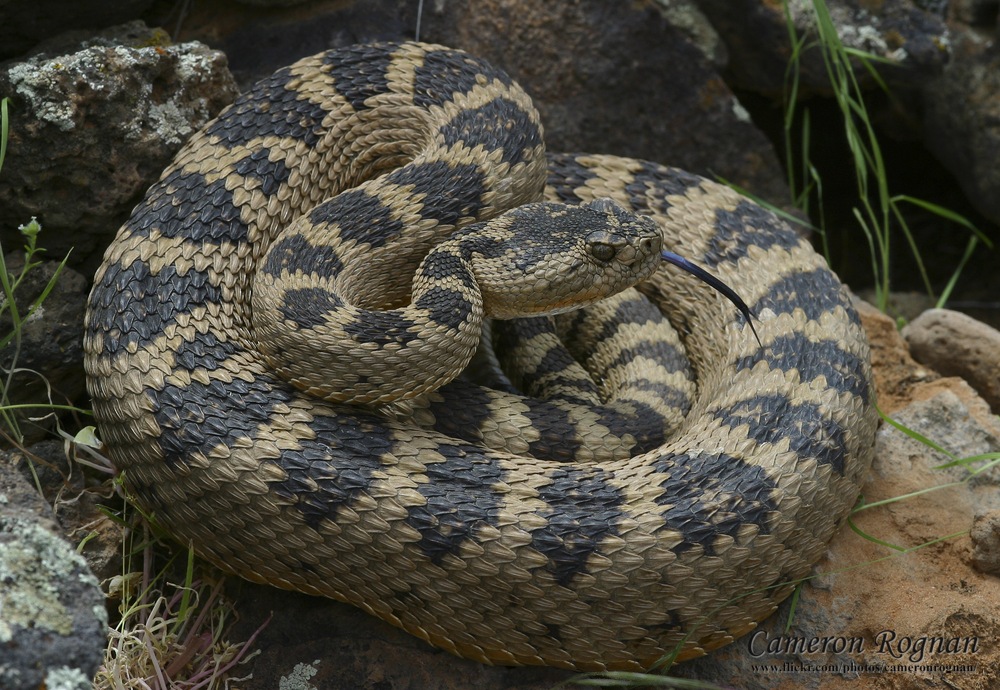Great Basin Rattlesnake
(Crotalus lutosus)
Great Basin Rattlesnakes can grow up to 5 ft in length, but most are about 2-3 feet long. The coloration and patterns on these snakes is highly variable, but most are brown, tan, or gray with dark blotches on the back.
During the heat of the day, or while hibernating in the winter, they seek refuge in mammal burrows, rock shelters, mines, and caves. They eat primarily small mammals, birds and other lizards while still young. They do not always rattle before striking or announcing their presence, instead, many rely on their camouflage to remain hidden .
Rattlesnakes are pit vipers, meaning they have heat sensing organs near their nostrils to detect the temperature of objects in their surroundings, such as their warm-bodied prey. These snakes are venomous and considered the most dangerous in our area. However, like most rattlesnakes, these creatures will avoid confrontation whenever possible and retreat before striking. They are most dangerous when they are harassed or when someone try’s to handle or move them. If you find a rattlesnake in your yard, garage, or anywhere else you need it removed, please call the Utah Division of Wildlife Resource or the Red Cliffs Desert Reserve to have to removed and relocated.
